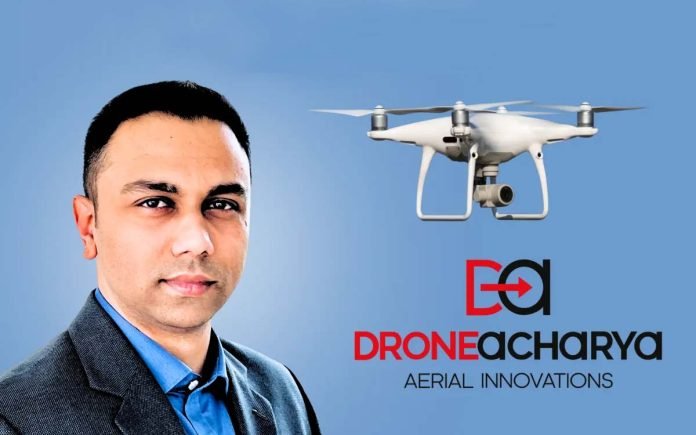New Delhi: Indian Army recently conducted high-altitude FPV drone trials at an aerial elevation of over 12,500 feet above mean sea level (MSL), poised to transform infantry operations under initiatives like ‘Make in India’ and ‘Aatmanirbhar Bharat‘.
This series of trials marked the successful deployment of FPV drones in collaboration with DroneAcharya Aerial Innovations, which specialises in custom UAVs and solutions. The company successfully demonstrated its range of indigenously developed drone variants, including 10-inch first-person view (FPV) drones and optical fiber-enabled kamikaze drones. The open trials were conducted in Uttarakhand at high altitudes, in adverse weather conditions, and in electronic warfare (EW) environments.
FPV Drones operated at a base elevation of 9,200 feet above mean sea level (MSL) while achieving the flight altitudes of up to 3,281 feet above ground level, reaching a total aerial elevation of over 12,500 feet MSL. The mission-critical flights were conducted under adverse weather conditions, with temperatures dropping as low as 5℃. In the high-altitude night operations with thermal camera integration, the FPV drone completed a 14 km, night-vision enabled flight, showcasing reliable endurance and visibility in low-light combat scenarios, crucial in support of all-terrain warfare for the Indian Army.
The major highlight of the exercise was an optical fiber-enabled kamikaze drone developed by DroneAcharya that operated in frequency-jammed conditions, equipped with a 500-gram warhead within an active electronic warfare (EW) environment. The drone executed a precision strike and neutralised the designated target at a range of 5 km. This marked a significant leap in India’s indigenous FPV strike drone capabilities, replicating real-world battlefield threats where communication may be compromised.
Commenting on the successful trials, Amit Takte, CTO at DroneAcharya, stated, “This marks a defining moment for indigenous defense technology in frequency-jammed environments. Operating a kamikaze drone carrying a warhead is crucial for mission success. In the current scenario, many drone missions fail because they cannot operate when the electronic warfare (EW) environment is active. DroneAcharya has successfully demonstrated the capability to fly in an EW environment at ranges of 5 kilometres, 10 kilometres, and up to 15 kilometres for precision strikes using the FPV kamikaze drone. This breakthrough technology will remain supportive of infantry operations for a long time in the ever-changing battlefield.”
In recent news, Former Army Chief General Manoj Mukund Naravane stated that with new emerging technologies, there is no fixed front line. Modern warfare, with asymmetric tactics, has blurred these boundaries. Locations deep within a country, such as airbases, cities, factories, and ports, can now be targeted. The “entire country” becomes a potential battlefield, not just the border or traditional conflict zones. This is where technology like drones comes into the picture in India, enabling a shift from a border-centric defence to a nationwide security posture, treating the entire country as a potential front line that requires 24/7 protection and regulation. This is where the drone capabilities displayed by DroneAcharya would play a significant role.
The company’s participation in these trials highlights how, in the absence of artillery or air support, kamikaze drones are poised to support the infantry operations, offering an advantage in challenging terrain. This strengthens India’s unmanned systems arsenal through modular platforms designed for rapid deployment and multi-mission versatility.
This meets global military technology security trends, where lightweight, man-packed UAVs are integrated with thermal vision, autonomous tracking, and real-time strike capabilities, supporting frontline tactics in all terrains, GPS-denied, and frequency-jammed environments. This successful test flight marks the first step toward building sovereign, scalable UAVs for India’s ground forces.






